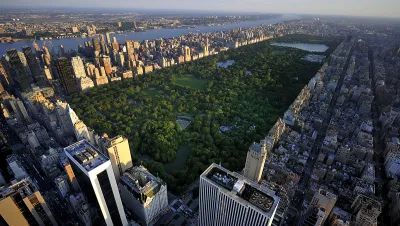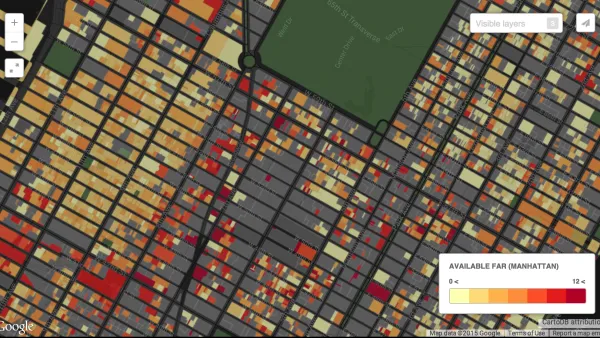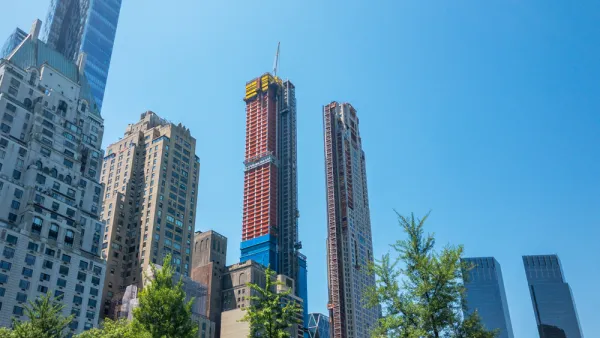New York magazine examines the latest wave of skyscraper development in New York City for the possibility that they might embody the highest outcomes of form and function.

"When you’re putting up a multibillion-dollar tower that’s a quarter-mile high, there’s not much leeway to make it a work of art. On the other hand, when you’re putting up a multibillion-dollar tower that’s a quarter-mile high, it had damn well better be a work of art," writes Justin Davidson to begin an article examining the wave of new skyscrapers in planning and construction in New York City.
Davidson proceeds with the premise that "Skyscrapers can be better," by examining a history of skyscraper development in New York and the contemporary unique design, planning, and economic considerations impacting the current wave of development. After examining specific cases and calling on historic arguments by Louis Sullivan and Ada Louis Huxtable, Davidson concludes with the following: "The fact that they contain the caviar of real estate means that they can afford the luxury of being good. We have to live with the follies of the outlandishly wealthy; we can at least insist that they pamper themselves in a way that also enriches the city."
FULL STORY: Who Wants a Supertall Skyline? The Emerging Aesthetic of the 1,000-Foot Tower

National Parks Layoffs Will Cause Communities to Lose Billions
Thousands of essential park workers were laid off this week, just before the busy spring break season.

Retro-silient?: America’s First “Eco-burb,” The Woodlands Turns 50
A master-planned community north of Houston offers lessons on green infrastructure and resilient design, but falls short of its founder’s lofty affordability and walkability goals.

Delivering for America Plan Will Downgrade Mail Service in at Least 49.5 Percent of Zip Codes
Republican and Democrat lawmakers criticize the plan for its disproportionate negative impact on rural communities.

Test News Post 1
This is a summary

Test News Headline 46
Test for the image on the front page.

Balancing Bombs and Butterflies: How the National Guard Protects a Rare Species
The National Guard at Fort Indiantown Gap uses GIS technology and land management strategies to balance military training with conservation efforts, ensuring the survival of the rare eastern regal fritillary butterfly.
Urban Design for Planners 1: Software Tools
This six-course series explores essential urban design concepts using open source software and equips planners with the tools they need to participate fully in the urban design process.
Planning for Universal Design
Learn the tools for implementing Universal Design in planning regulations.
EMC Planning Group, Inc.
Planetizen
Planetizen
Mpact (formerly Rail~Volution)
Great Falls Development Authority, Inc.
HUDs Office of Policy Development and Research
NYU Wagner Graduate School of Public Service





























